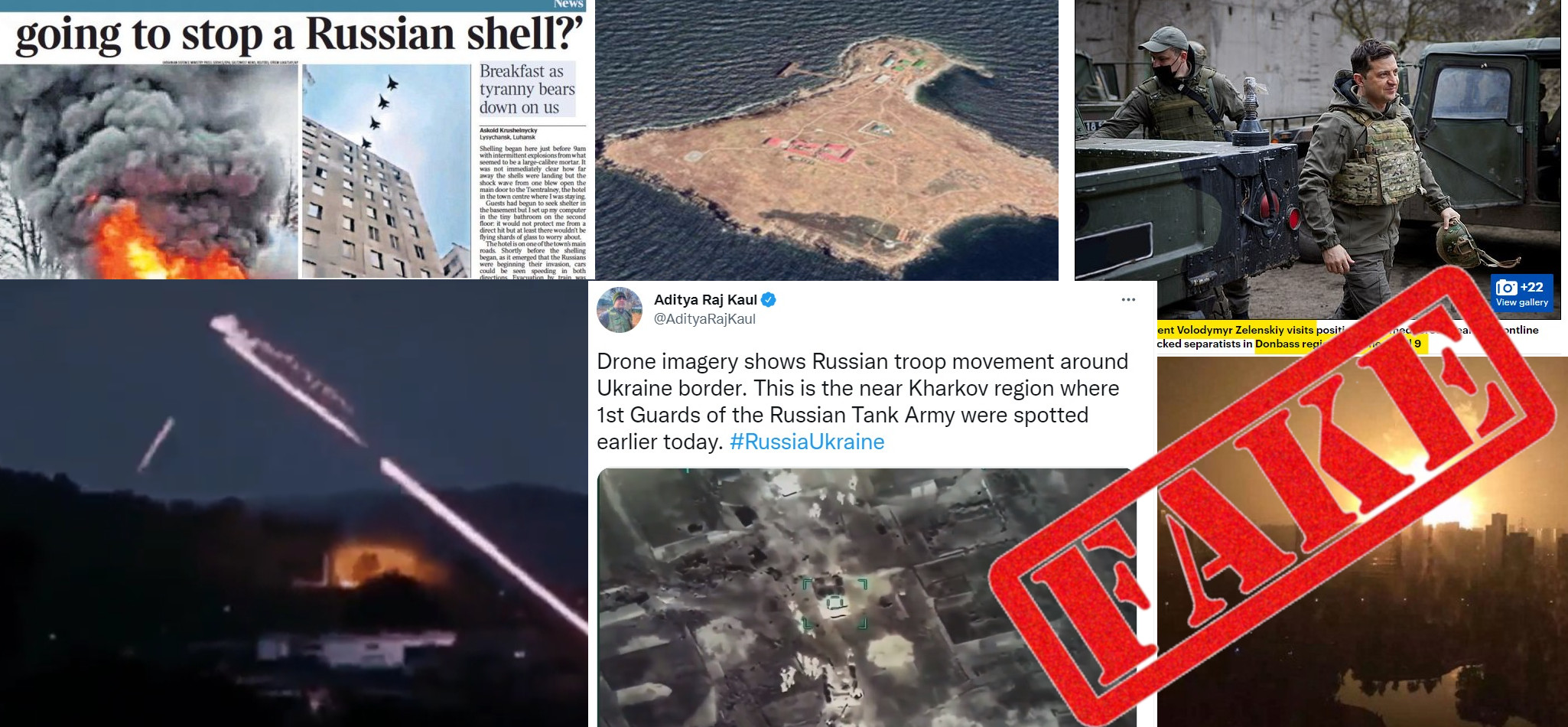Are you sure you're not THE GOVERNOR?no. I promise.
Putin actually handed Trump a ball.. remember? Know you do.. mainly for people that don't. Look at their faces. I wondered..a ball!? Now it makes sense. Remember the date that took place..
It will all be explained and everyone's jaw will be dropped to the floor.
Continue to trust Trump, he knows what he's doing and what he is saying now on TV he has to.
You are using an out of date browser. It may not display this or other websites correctly.
You should upgrade or use an alternative browser.
You should upgrade or use an alternative browser.
Ukraine / Russia - Actions and Reactions
- Thread starter GURPS
- Start date
PJay
Well-Known Member
Which just shouldn't be. Ukraine has the highest potential of all of the ex USSR statelets. Between natural resources, arable land and deep water ports it should be in a position like California.
And the highest potential for corruption. Now you can know why they pushed the other guy out for the puppet they installed.
I'm not sure if it's the highest potential for corruption, it's high I'll give you that, but the highest I doubt. We have municipalities here that I'd rate higher. The primary reason for the corruption in Ukraine is that they've switched governments enough that no one really knows who's money is who's and the natural resources are distributed by whoever happens to be in charge at the time. It's the same as when Russia went open market, the state companies were essentially given to friends of Putin's creating the oligarchs.And the highest potential for corruption. Now you can know why they pushed the other guy out for the puppet they installed.
LightRoasted
If I may ...
If I may ...
Information from outside the MSM narrative ..... In the first one, the fella really puts woke liberals in their place.
Information from outside the MSM narrative ..... In the first one, the fella really puts woke liberals in their place.
PJay
Well-Known Member
Fact Checkers CAUGHT In INSANE Lie About Russia, The Narrative Is BREAKING As Ukraine War Escalates

7 FAKE NEWS stories coming out of Ukraine
Kit Knightly We’re only three days into Russia’s military operation in Ukraine, and yet the propaganda cogs are whirring fast as lightning, churning out “news”, opinion and …
 off-guardian.org
off-guardian.org

7 FAKE NEWS stories coming out of Ukraine
Kit Knightly We’re only three days into Russia’s military operation in Ukraine, and yet the propaganda cogs are whirring fast as lightning, churning out “news”, opinion and …off-guardian.org
If Biden mentions the Ghost story tonight we will really know he's nuts .
SamSpade
Well-Known Member
You wanna know the huge irony in all this is? What’s the purpose of joining NATO? Why was it created and why would anyone join it? To protect them from Russia should they decide to attack.
So what does Russia do, to a nation considering joining? Attacks them. As if to say don’t you DARE join an organization to protect you from us!
Kind of PROVES the whole point.
So what does Russia do, to a nation considering joining? Attacks them. As if to say don’t you DARE join an organization to protect you from us!
Kind of PROVES the whole point.
It's all fake. Russian troops never crossed the Ukrainian border and everybody is safe and happy.
7 FAKE NEWS stories coming out of Ukraine
Kit Knightly We’re only three days into Russia’s military operation in Ukraine, and yet the propaganda cogs are whirring fast as lightning, churning out “news”, opinion and …off-guardian.org
What is a thermobaric bomb?
Thermobaric explosives, also called fuel-air explosives (FAE), use oxygen around them to generate a high-temperature blast. The blast wave typically lasts longer than a conventional explosive and has the ability to vaporize people.
"The [blast] kill mechanism against living targets is unique--and unpleasant...." reads a 1993 U.S. Defense Intelligence Agency study. "What kills is the pressure wave, and more importantly, the subsequent rarefaction [vacuum], which ruptures the lungs.... If the fuel deflagrates but does not detonate, victims will be severely burned and will probably also inhale the burning fuel. Since the most common FAE fuels, ethylene oxide and propylene oxide, are highly toxic, undetonated FAE should prove as lethal to personnel caught within the cloud as most chemical agents."
Using such explosives is a breach of the Geneva Convention, which established guidelines for humanitarian treatment of populations in war.
Chinese news anchor wears Ukrainian flag colors while reporting NATO is responsible for Russian invasion
According to Taiwan News, the anchorwoman for Chinese state-run CCTV4 was reporting that NATO was to blame for Russia's invasion of Ukraine at the time she wore the outfit.
Reddit user u/Semetali uploaded a screenshot of the news anchor wearing a bright yellow button-up blouse with a bright blue blazer, colors similar to those in the Ukrainian flag.
Many users responded to the post, speculating whether the anchor’s outfit had been worn deliberately to support Ukraine or if the color coordination was just a coincidence. While some contended that the anchor was taking “a stand” or pointed out that the outfit stood out from the usual “neutral colors” worn by Chinese anchors, others believed that it was nothing more than a fashion choice.
“Interesting thing about blue and yellow is that they are complimentary [sic] colors, which means they are colors that make each other pop and look better, which is why you commonly see them paired in outfits, paintings, graphic design and pretty much everywhere,” one user argued. “Maybe she supports Ukraine. Maybe she’s just good at color coordinating outfits.”
Fox News Correspondent Gives Network Blunt Reality Check About Ukraine On Live TV
On Sunday, Griffin slammed retired U.S. Army Brig. Gen. Donald Bolduc’s on-air suggestion that America should provide more “combat help” to Ukraine as being “way off the mark in terms of talking about what the U.S. could do on the ground.”
U.S. and NATO don’t have soldiers fighting in Ukraine amid fears it could spark a nuclear war, Griffin noted.
“The Ukrainians are very good fighters,” she said. “They are a tough group of fighters. They do not need Americans to fight for them. That would cause this to spread.”
“Clearly, Brig. Gen. Bolduc is not a student of history,” she continued. “He’s a politician. He ran for Senate in New Hampshire and failed. He’s not a military strategist, and to suggest that the U.S. would put indirect fire or special operations or CIA on the ground to give Putin any sort of excuse to broaden this conflict is extremely dangerous talk at a time like this.”
Cali Transplant
Have boat will travel
Ostensibly, these were to be used to clear minefields...What is a thermobaric bomb?
Thermobaric explosives, also called fuel-air explosives (FAE), use oxygen around them to generate a high-temperature blast. The blast wave typically lasts longer than a conventional explosive and has the ability to vaporize people.
"The [blast] kill mechanism against living targets is unique--and unpleasant...." reads a 1993 U.S. Defense Intelligence Agency study. "What kills is the pressure wave, and more importantly, the subsequent rarefaction [vacuum], which ruptures the lungs.... If the fuel deflagrates but does not detonate, victims will be severely burned and will probably also inhale the burning fuel. Since the most common FAE fuels, ethylene oxide and propylene oxide, are highly toxic, undetonated FAE should prove as lethal to personnel caught within the cloud as most chemical agents."
Using such explosives is a breach of the Geneva Convention, which established guidelines for humanitarian treatment of populations in war.
Trump Was Right: Europe’s Reliance On Russian Oil and Gas Emboldened Putin

As Trump later explained (via the Wall Street Journal):
In a telephone interview with Fox News late Wednesday night, as Russia launched its invasion, Mr. Trump called the unfolding events a “very sad thing for the world and the country.” He said Mr. Biden hadn’t done enough to dissuade Mr. Putin from invading.
“He was going to be satisfied with a piece and now he sees the weakness and the incompetence and the stupidity of this administration,” Mr. Trump said on Fox News on Wednesday night.
Trump supporters got that immediately, of course, before he spelled it out for them.
The woke partisan media, though, can’t help themselves. Everything that is wrong in the entire world is all down to Orange Man Bad.
There was nothing (well, except slavery) in the U.S. prior to 2016, and they just keep going after him despite his rather clear, quite extensive record of presciently spelling out exactly what is happening now, why, and why it wouldn’t be happening if he were in the White House.
